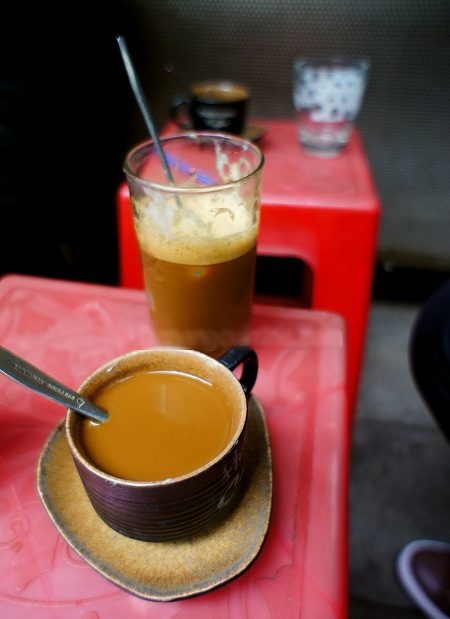Coffee & Life
Saigon’s Coffee Culture Featured in British Press

An article published by The Telegraph (UK) praises the coffee culture of Ho Chi Minh City (Saigon), calling it unlike anywhere else in the world. In this vibrant metropolis, coffee isn’t just a drink — it’s an essential fuel that energizes the entire city.
The piece opens with a humorous yet telling observation: the first thing any visitor must learn upon arrival in Saigon is how to cross the street — a challenge that requires a delicate blend of courage and calculation. Confronted with an endless stream of motorbikes, all driven by helmeted and masked riders, newcomers often find themselves stunned and overwhelmed. But over time, they begin to realize this chaotic current is actually harmonized; step forward confidently, and the flow will shift around you.
This is one of Saigon’s defining features — a city where soaring skyscrapers coexist with street-side family life. Beneath the shadows of modern high-rises, an elderly woman may be seen selling bún or phở from a tiny cart, blending the old and the new in a way that feels natural and eternal.
The article invites readers to escape the city’s bustle by enjoying coffee on a balcony cafe, observing the hectic streets from a peaceful perch. There, over a glass of Vietnamese iced coffee (cà phê sữa đá), one can begin to grasp the quiet strength and energy that drive the city. The journalist admits that, at first, the sweet taste was unfamiliar — even off-putting — to someone used to bitter brews. But just three days later, they were hooked. The creamy, refreshing sweetness proved to be the perfect match for Saigon’s hot, humid climate.
Coffee was introduced to Vietnam in the late 19th century. Since then, the country has become one of the world’s largest coffee exporters, and Vietnamese people have elevated the drink into a culinary art form. Many cafés offer menus that span five pages, listing dozens of coffee variations — a reflection of how deeply integrated coffee has become in daily life.
The writer describes how their own routine quickly adapted: a day in Saigon was incomplete without a coffee break. And even after a simple dinner at an anonymous phở stall, they were struck by the realization that — no matter how many motorbikes fill the roads or how many towers rise — the traditional flavors of Vietnam endure. Whether it’s phở, cà phê, street markets, fragrant rice, or fresh herbs, these elements keep Vietnam’s past alive in its cuisine.
The article also notes a cultural detail: Vietnamese people rarely rely on refrigerators, preferring to shop for fresh food daily. Rich or poor, young or old, people gather at humble street stalls. It’s not uncommon to see a student with headphones grabbing a quick breakfast next to an elderly couple returning from morning exercise, savoring a slow and quiet moment.
In Vietnam, food is a deep-rooted art passed down through generations. Within its flavors, one can sense the presence of grandmothers and mothers who lived through times before the Vietnam War — a war that once disrupted the Mekong’s rice harvests. But the spirit of the land, and the warmth of its people, remain vividly present in every bowl of phở and every cup of coffee.

I bought my last glass of iced milk coffee before heading to the War Remnants Museum. In this country, everyone has their own story — and that story is somehow tied to war.
Every family has lost someone to war. And yet, people no longer talk about it much. For them, the war has ended — though not entirely passed. Its remnants still quietly linger.
On the bustling streets of Ho Chi Minh City, someone out there may still carry within them silent wounds, painful stories from the past. Vietnam has endured many wars…
I slowly sipped my iced milk coffee. Its sweetness seemed to wash away the bitterness of the sorrowful, heartbreaking images I had just seen in the museum…
Collected.







